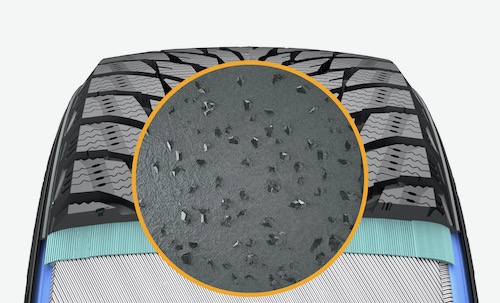Different areas in North America have different legislation when it comes to the use of winter tires. It basically governs the use of winter tires and can also contain restrictions to the use of studded tires. Those restrictions can range from limiting their use to certain months to them being banned. The rules differ between states and provinces and it is your responsibility to know what applies. You also need to check before you plan to drive across state or provincial borders, if there are any restrictions or if you need to maybe also have snow chains when it is snowing and you cross certain mountain passages.
When it comes to winter tires, the studded tires do have some restrictions while the non-studded tires don’t have any restrictions and can be used freely. The same is with the all-weather tires, that can even be used for all year round use and can handle winter if they are winter approved. The non-studded tires should still be changed to all-season tires once the cold winter season has come to an end. This is to prevent excessive tire wear.
Winter tires are very important for winter driving and it can be very dangerous to drive without proper tires, as snow, ice and slush represent some of the trickiest conditions for driving. All-season tires or any tire that isn’t intended for winter use will become hard at low temperatures due to the rubber compound used. This decreases the friction that they can assert making them unsuitable for winter use. You really need winter approved tires to be able to stay safe. They will need to have the severe service emblem on the sidewall of the tires to indicate that they have passed the performance tests that classify winter tires. The M+S marking isn’t enough for winter use.
For more information regarding new winter tires, visit: nokiantires.com
